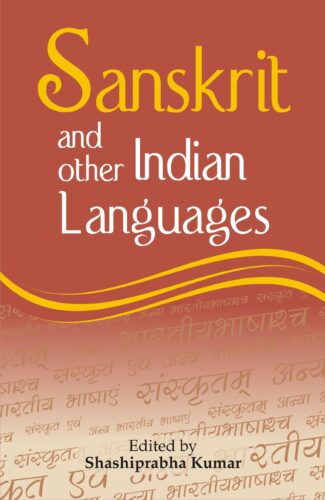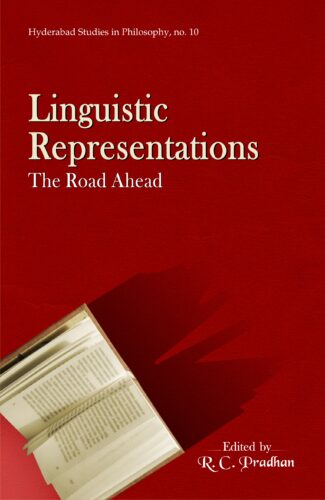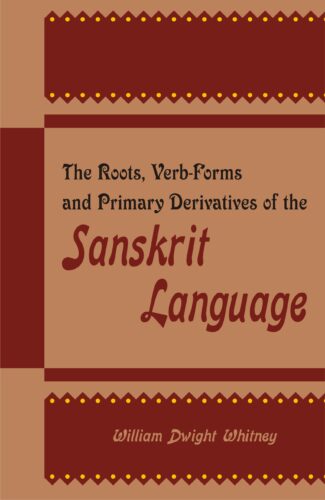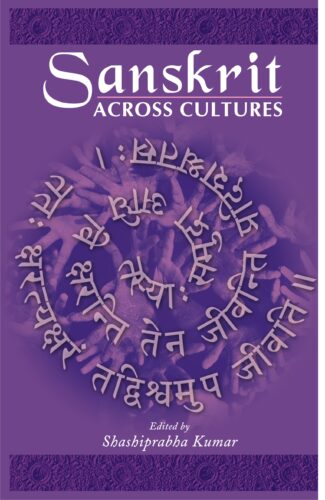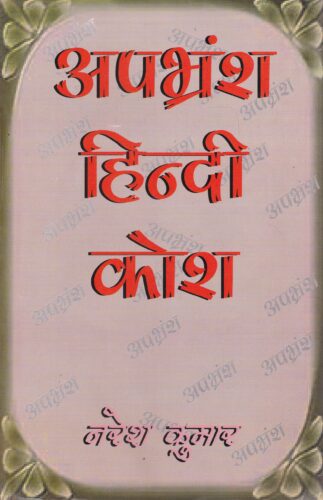

Apbharamsa Hindi Kos...
Apbharamsa Hindi Kosha
Apabhramsa-Hindi-Dictionary by: Naresh KumarThis Dictionary of Hindi Apabhramsa gives in detail the grammatical importance of words, their meanings, correct spellings, the alternate words and their various usages as mentioned by lexicographer Naresh Kumar.
₹1,500.00 Original price was: ₹1,500.00.₹1,350.00Current price is: ₹1,350.00.
ISBN: 9788124601365
Year Of Publication: 1999
Edition: 1st
Pages : xlv, 869
Language : Hindi
Binding : Hardcover
Publisher: D.K. Printworld Pvt. Ltd.
Size: 23 cm.
Weight: 1500
This Dictionary of Hindi Apabhramsa gives in detail the grammatical importance of words, their meanings, correct spellings, the alternate words and their various usages as mentioned by lexicographer Naresh Kumar.

- Sale!Meaning and Language by: Satya Sundar Sethy
₹600.00Original price was: ₹600.00.₹540.00Current price is: ₹540.00.This volume explores the nature of meaning and the way it functions in language. Philosophers such as Aristotle, Thomas Acquinas, John Locke, Immanuel Kant and David Hume had keen interest in the study of meaning, though it was not central to their philosophical inquiry. But the contemporary philosophy takes a radical twist towards language which is characterized as linguistic turn in philosophy. Meaning and its correct characterization are the foremost concerns of contemporary philosophy.
Study of two semantic perspectives meaning atomism and meaning holism is the core content of this book and it mainly focuses on contrasting these two perspectives or models of meaning and evaluates them with a view to arrive at an explicit conception of meaning that will correctly reveal the semantics of natural language.
In doing so, it vividly discusses the two perspectives of meaning along with the atomistic theory of Gottlob Frege, Wittgensteins approach to meaning, logical positivists conception of meaning, why meaning atomism fails to capture the uniqueness of meaning, Quinian theory of meaning holism, Davidsons approach to meaning holism, and Later Wittgensteins view on meaning holism, thus covering a wide gamut of the topic. - Sale!Sanskrit and Other Indian Languages by: Shashi Prabha Kumar
₹440.00Original price was: ₹440.00.₹396.00Current price is: ₹396.00.This book is mainly a compilation of articles which were primarily presented at the Sanskrit Week Programme organized by the Special Centre for Sanskrit Studies, Jawaharlal Nehru University, New Delhi from 714 August 2006. A few articles have, however, been added later on. Sanskrit and Other Indian Languages features the influence and interaction of Sanskrit with Prakrit, Hindi Apabhramsha, Urdu, Bangla, Tamil, Telugu, Kannada, Malayalam, Assamese, Punjabi, Kashmiri and Gujarati. It covers various aspects of mutual reciprocation between Sanskrit and other Indian languages such as Þ conceptual, structural, grammatical, historical, linguistic, colloquial as well as literary. Issues of oral and written forms of language as also of textual translations have been dealt with by Sanskrit scholars who are well-versed in respective Indian languages. Finally, there is an article which argues for Sanskrit as a National Language of India. This book is a modest attempt to convey the inherent thought-pattern of Indian mind basically enshrined in Sanskrit but expressed through variety of verbal forms across the country.
- Sale!Linguistic Representations by: Ramesh Chandra Pradhan
₹990.00Original price was: ₹990.00.₹891.00Current price is: ₹891.00.The essays in this volume deal with the nature of linguistic representations as distinguished from other types of representations, including mental representations. These study language and linguistic representations, examining crucial questions like nature of language and language as a source of knowledge, accommodating linguistic representations within the broad framework of truth-based semantics and hermeneutic interpretation of language. The essays focus on the structure and limits of linguistic representations from both the Indian and Western perspectives. The semantic problems of meaning, reference and truth constitute the main issues facing any theory of linguistic representations and, therefore, these issues have been discussed in-depth. Besides, there has been an effort to understand how to locate the language-reality relationships within a broad representationalist framework. The essays take up many specific topics, examining theories of linguistic representations, such as the anti-representationalist stand of Wittgenstein and Derrida, Grice’s theory of meaning, and perspectives of Indian classical schools such as the Naiyayikas’ perspective on testimonial knowledge. The essays specially focus on the Indian theories of grammar and linguistic representations to highlight how philosophy of language, whether classical or contemporary, can hardly get rid of the semantic locus of meaning and truth.
The volume will prove invaluable to scholars of philosophy, especially those concerned with language and linguistic representations. - Sale!Roots, Verb-Forms and Primary Derivatives of the Sanskrit Language by: William Dwight Whitney
₹650.00Original price was: ₹650.00.₹585.00Current price is: ₹585.00.The book is intended especially as a supplement to Sanskrit Grammar of W.D. Whitney and includes all the views comprehensively of a given root in the Sanskrit language. The author has respected the language of every period, and the great St. Petersburg Lexicon of Böhtlingk and Roth have been his greatest source for materials on epic and classical literature. In the older language of Vedas and Brahmanas and Upanishads and Sutras, he has done much more independent work. The periods in the life of the language which are acknowledged and distin- guished by appropriate notation are six: the Veda (v.); the Brahmana (b.); the Upanishads (u.); the Sutras (s.); the epics (e.); and the common Sanskrit (c.). They have all been adequately explained in detail. The book will be useful to the scholarly community in need of authentic information on Sanskrit language.
- Sale!Sanskrit Across Cultures by: Shashi Prabha Kumar
₹480.00Original price was: ₹480.00.₹432.00Current price is: ₹432.00.Sanskrit may be said to be one of the oldest extant languages of the Indo-European group of languages. It is hailed as the memory of the human race and its earliest cultural history. No serious study of the world civilization and cultures of different countries will be possible without understanding Sanskrit as it evolved and influenced other languages of the world or bears association with them. This volume has articles that attempt such an understanding of the Sanskrit language. Scholars trace the link of Sanskrit with various countries of the world and their cultures and languages. They throw light on Sanskrit grammar as recorded in Chinese works and contributions of Sanskrit to Chinese linguistics; on the many Sanskrit manuscripts available in Japan; and similarities and regularities in the phonetic system, grammar and vocabulary of Sanskrit and Russian. They view links between Sanskrit and the Slavonic languages, German, English, Persian and the Indonesian languages, examining mutual borrowings. They explain the way translations from one language to another have affected preservation and dissemination of knowledge. The articles, a result of meticulous study and marked by simplicity and clarity in expression, will be interesting and informative to a range of scholars of Indology.




